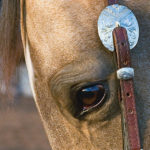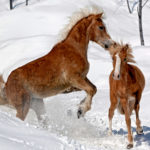26 July 2012
http://www.vimeo.com/11130694
Susanna Hedenborg is Professor of Sport Sciences teaching at School of Education at Sweden’s Malm? University. Her research studies horse sports by analyzing how people participate.
The Olympic equestrian events represent the pinnacle of our sport. This is a competition, a test of wills, of ability and of good (or bad) luck. You might argue that there’s nothing scientific about winning at dressage, eventing or jumping. It’s a skill, not a science. Some of our greatest rider athletes are not able to articulate how they do what they do. We describe people like New Zealand?s Andrew Nicholson and Germany?s Michael Jung as having ?natural? ability. Great Britain?s Mary King is a ?keen competitor?. The Netherlands? Edward Gal is to a dressage arena what Fred Astaire was to a dance floor. And what horse wouldn?t jump over the moon for Sweden?s Rolf Goran-Bengtsson or Brazil?s Rodrigo Pessoa? Humans have played games on horseback and tried to beat their rivals for thousands of years. Every culture that has horses has horseback games. But now there’s a deepening knowledge base and a science to horse sports. And the Olympics? The Games are the NASA of equestrian science and study. It’s all there: a universe of data waiting to be analyzed. If you?ve been out of school a while, you might not even realize the extent to which equestrian sciences and studies have crept into academia, especially outside the United States. They are out of the stable and into the classroom. We have academics who pursue horse sports from the veterinary angle, of course. We have academics who pursue horse sports as social activities. Medical consequences. Therapeutic benefits. Equine tourism. Welfare. But possibly the biggest change is the shift from focusing on breeding or training a superior horse to studying the influence of the trainers, riders and caregivers who interact with a horse. Somewhere along the line, someone realized that the rider is hardly an inanimate object in the saddle and that a horse’s behavior is shaped throughout the day and night, not just when it is tacked up. A new age is born. At some point in the past few months, any number of “sciences” has been applied to the preparation of the equestrian athletes who were advanced to high performance training in their respective countries. They may have been worked on by a physiotherapist who analyzed their strengths and weaknesses. A sports psychologist is a standard member of many nations’ teams. Riders are now not just helped to recover from injuries and falls but also are coached how to properly fall from a horse in the first place. The ergonomics of saddlery, stable equipment and even mounting blocks has been analyzed. A biomechanics trainer might have put sensors on a rider to figure out optimal balance or spinal alignment for dressage. There are sensors to place under saddles to analyze which saddle is best both for the horse and for the rider. Sensors also exist that can gauge the relative number of pounds of force exerted on reins. And, finally, coaching is not just about choosing the best team to go forward; it is about managing the individuals and their horses, owners and entourages. The coach, or chef d’equipe, constructs an umbrella over his or her team and works to mold them into a cohesive social and sport unit, a functional moving tribe that progresses forward instead of sinking into the mire of jealousy and conflict. Horses have?physiotherapists, gait analysts, behaviorists, farriers, osteopaths, nutritionists, saddle fitters, veterinarians, dentists, footing experts, and varying levels of specialist and generalist trainers. Some horses have sessions with the equivalent of horse mental health therapists. Some owners may employ communicators, astrologists, healers and feng shui stable consultants. But it doesn’t stop there. Academics study the demographics of horse sports–both the participants and the audiences. They study the financial impact of horse sports on communities that host shows and events. They study horse transport. Architecture. They study the psychological effects of winning or losing or caring for horses on children and teens. They study you. And they study me. The horses, riders and staff who are in London’s Greenwich Park are under a scientific microscope. People half a world away from London will be analyzing something as minute as the effect of a horse’s cross-country starting time on performance. Or the latitude and longitude or altitude of where a horse trained. Factors about the competition at London will show up in dozens of studies by people who aren’t even there. But to a scientist, two weeks of Olympic horse sports looks like the Mount Everest of horse sport data banks: they analyze it, because it’s there. So, in the big picture, it might not matter that much who wins and loses, but what we learn. Horse sport will not pass this way again. It is moving ahead at a full gallop–while each stride is micro-analyzed by a herd of scientists who believe that they can get to the bottom of why Andrew Nicholson and Edward Gal are so good at what they do. Why Lenamore and Raval get better instead of just older. And, most interesting of all, why millions of us care, spend money, and stick with these sports. Over the next few weeks, several equestrian experts–“scientists”, if you will–have agreed to share some of their studies, observations and predictions about the equestrian events at the Olympic Games. You’ll find out that horse sports has been studied from every angle but that a big x factor still crops up. That is simply because horses can’t read research journals or textbooks yet. But someone is probably working on that, too. ?Photo: Equine science students at the University of Georgia. Desktop by Rob Nguyen.








